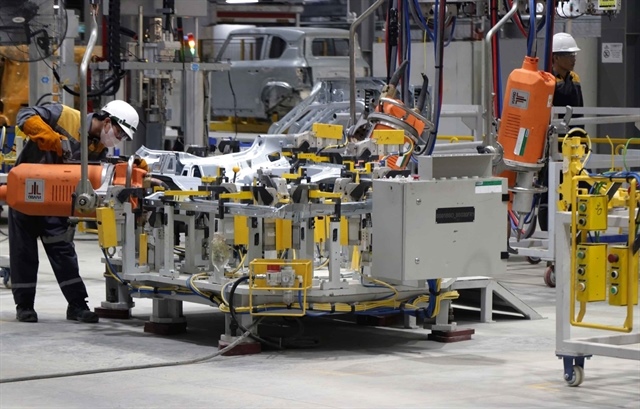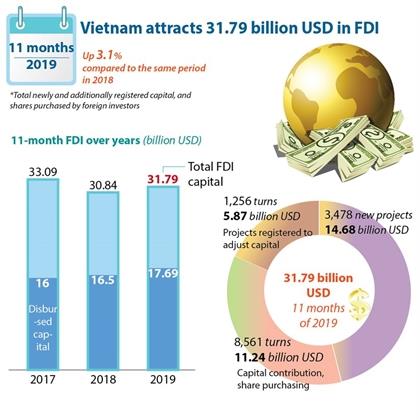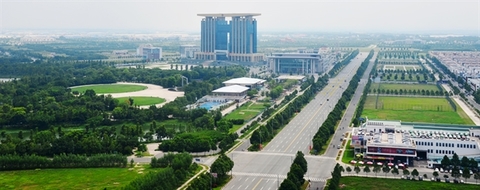Building a global gateway for foreign trade in Mekong Delta
Building a global gateway for foreign trade in Mekong Delta
Prime minister Nguyen Xuan Phuc has asked the Ministry of Transport (MoT) to complete the revised planning of the Soc Trang seaport system and Tran De Port, so that they can be assessed together with the Master Plan on the National Seaport System for the 2021-2030 period, with vision towards 2050. Once approved, the new scheme aims to boost investment into the Soc Trang seaport system and Tran De Port to drive the Mekong Delta’s socio-economic development.In its draft planning and environmental assessment report of the revised development planning of the Soc Trang seaport system and Tran De Port, Construction Consultation JSC for Maritime Buildings proposed for the facilities to be located on Tran De Estuary, about 10-16km from the shore. The port system would be about 9,000 metres long and consist of 26 wharves, 16 of which would be general wharves capable of receiving ships above 100,000 deadweight tonnage. The total port and associated area will cover about 1,000 hectares, with the capacity to receive 130-150 million tonnes of cargo per year. The total investment value of the port area is estimated to exceed VND50.5 trillion ($2.2 billion) until 2030.
The volume of cargo calling on the Mekong Delta’s seaports rose fairly sharply in previous years. While in 2013, only 7.6 million tonnes of cargo called on the region’s seaports, the figure climbed to around 19.3 million tonnes in 2017. This represents an average growth rate of 26.2 per cent per year during the period, significantly higher than the country’s average growth of 12.1 per cent. Notably, container cargo grew by a tremendous 41.7 per cent during the period.
Export items in the delta region are mainly seafood, rice, processed food, fruit and vegetables, textiles and garments, footwear, and fine handicrafts, with seafood and rice being the two staples.
Annually, the delta contributes about 90 per cent of the country’s rice, 70 per cent of fruit, and 65 per cent of seafood exports. However, only about 20-30 per cent of the export volume goes through seaports in the region. The remaining 70-80 per cent is transited through the ports of Ho Chi Minh City and the south-eastern region before heading to foreign markets – believed to be a waste of time and expenses and adding significant pressure to the region’s limited road transport network.
The current seaport system in the delta has yet to meet ever-increasing import-export demand of localities in the region as most ports are located deep in the mainland, which means the channels leading to the ports are often silted up, making them difficult for large vessels to access.
To propel the delta’s socio-economic development, experts say it is essential to have in place a port capable of handling the import-export activities of the region, helping to save 30-50 per cent of transportation costs by cutting out the need to transport goods to southern ports. This will help remove the bottleneck in cargo transport in the region while pushing up the development of associated industries.
The smart option
With a 72-kilometre coastline that accommodates three estuaries, of which Dinh An and Tran De are two important gateways to the East Sea, Soc Trang has enormous potential for local seaport system and shipping development.
Through a survey conducted over multiple years, leading maritime experts at home and abroad came to the conclusion that the deep-water port that would act as a major venue for the region’s import-export should be positioned in Tran De Estuary in Soc Trang. Experts highlighted the location as a convergence of favourable conditions in climate, channel conditions, geography, as well as factors to promote international trade. Furthermore, settled in the heart of downstream Hau River, a deepwater port would provide the most convenient and shortest access to localities in the delta region.
This location would also make it easy to connect with other ports and logistics centres, as well as the regional road and waterway networks such as National Highway No.60 linking to the nearby provinces of Tien Giang, Ben Tre, Tra Vinh, and Soc Trang, or the Quan Lo-Phung Hiep route linking to the provinces of Hau Giang, Soc Trang, Bac Lieu, and Ca Mau.
As for waterway transport, its extensive river and canal system makes it easy for Soc Trang to spur trade exchange with localities in the region and even neighbouring Cambodia.
Legal groundwork
In light of the prime minister’s Decision No.423/QD-TTg issued in 2012 that approves Soc Trang’s socio-economic development planning towards 2020, the province was allowed to study the possibility to turn Tran De Port into a major port to promote export-import in the delta region. In 2017, in a meeting with Soc Trang leaders, the prime minister agreed to add Tran De Seaport to Vietnam’s seaport development planning, and in July the same year, the premier agreed to add the port to Vietnam’s revised seaport system planning until 2020, with vision towards 2030.
Based on the business community’s requirements, Soc Trang People’s Committee has proposed revising the development planning of the Soc Trang Port and Tran De Seaport project in the national seaport system to build a special-category seaport to act as an international gateway port with the main wharf situated offshore Tran De Estuary, capable of receiving ships from 50,000 to 100,000 deadweight tonnage and beyond, directly serving import-export activities in the region.
Based on proposals from Soc Trang People’s Committee and the MoT, as well as relevant ministries, last May Deputy Prime Minister Trinh Dinh Dung assigned the MoT in tandem with the Ministry of Planning and Investment, Soc Trang People’s Committee, and relevant agencies to draft and evaluate the revised development planning of the Soc Trang seaport system and Tran De Port for submission to the prime minister.
Most recently, on October 28, the premier issued Dispatch No.1432/TTg requiring the MoT to complete the revised planning so that it can be evaluated together with Vietnam’s Master Plan on the National Seaport System for the 2021-2030 period, with vision towards 2050, for submission to the government.
The MoT is now in full tilt to complete the planning. Once approved, the revised planning will lay the groundwork to draw up detailed construction planning, and call for investment into turning the Soc Trang seaport system and Tran De Port into a major import-export port for the delta region.
Last year, many domestic and international investors have expressed keen interest in building a deepwater seaport in the Tran De Estuary area. Soc Trang is welcoming investors and commits to providing the best conditions to businesses from assorted economic sectors looking to participate in the construction of Tran De Port, turning the area into a dynamic and modern industrial, maritime, and urban centre, spurring on the development of Soc Trang and the whole delta region.



















